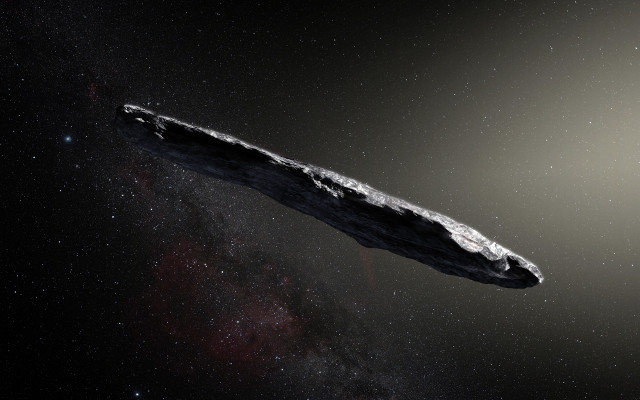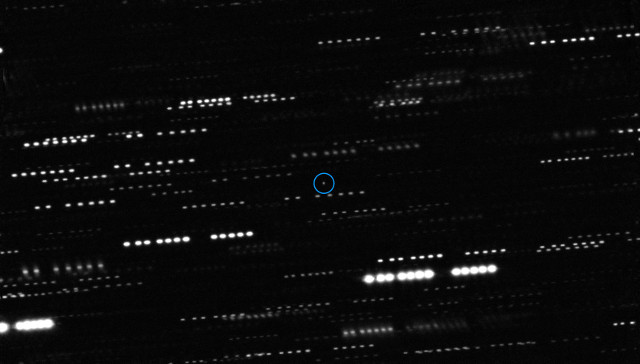
An article published in the journal “Nature” describes the observations carried out on ‘Oumuamua, the named given to the interstellar asteroid whose discovery was announced only a few weeks ago. It was designated as A/2017 U1 but after the creation of a new class of objects for interstellar asteroids its designation was modified into 1I/2017 U1. Observations with ESO’s VLT (Very Large Telescope) and other telescopes showed that it’s likely dense, rocky, reddish and with a very elongated shape.
The discovery of an asteroid that had an abnormal trajectory had immediately made astronomers think that it was an object coming from outside the solar system and that made the news a few weeks ago. The rush to the observations was due not only to the hope by some astronomer to tie their name to the study of the first interstellar object but also to the fact that it had already passed closest to the Sun and was on a course that will bring it again out of the solar system.
Last week, the International Astronomical Union (IAU) announced the creation of the new class of interstellar objects. That’s precisely after the discovery of this asteroid, whose designation has consequently become 1I/2017 U1. At the same time, it was announced that it was given a name, ‘Oumuamua, derived from Hawaiian mythology, a choice due to the fact that the observatory discovered it is located in Hawaii.
Karen Meech, of the Hawaii Institute of Astronomy, led a team of astronomers who used the FORS (FOcal Reducer and Low Dispersion Spectrograph) instrument installed on the VLT with 4 different filters and compared the asteroid images obtained with other those from other telescopes. The result was the discovery that the asteroid has a strong variation in its brightness, a factor of ten, as it rotates on its axis every 7.3 hours.
Such a strong variation is important because it means that the asteroid ‘Oumuamua is very elongated. So far, the most elongated objects known had a length about three times their width but this interstellar asteroid has a length approximately 10 times its width with a complex, convoluted shape. Its color is dark reddish, similar to objects in the outer the solar system, and shows no activity that can produce dust.
‘Oumuamua’s shape is one of this asteroid’s oddities and more than ever stimulated the public’s fantasy. Since its discovery, science fiction fans mentioned Rama in reference to Arthur C. Clarke’s novel. As a matter of fact, there are no clues that might suggest that it’s an artificial object.
Various telescopes keep on observing ‘Oumuamua but this is an increasingly difficult task because it’s moving away from Earth. It’s estimated that it will pass beyond the orbit of Saturn in early 2019 and over the years will pass through the outer areas of the solar system. In the future, the improvement of astronomical instruments could make it easier to identify other interstellar objects.


